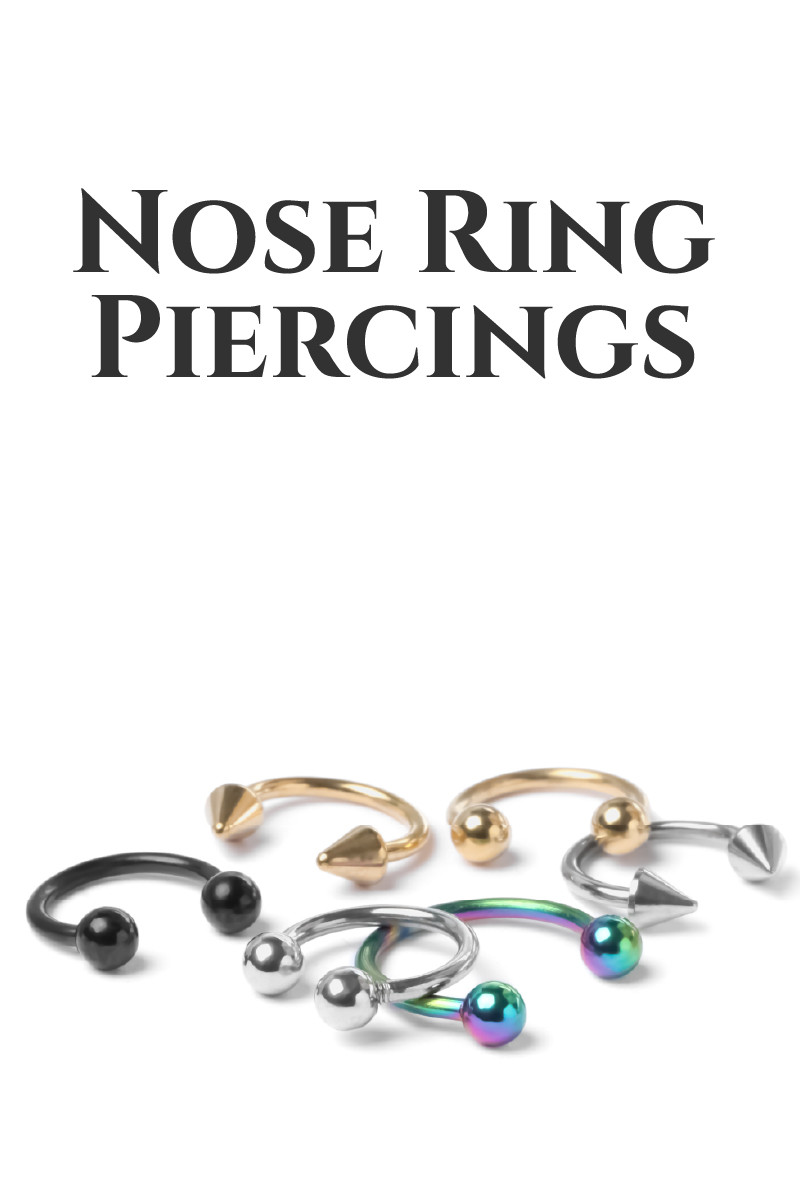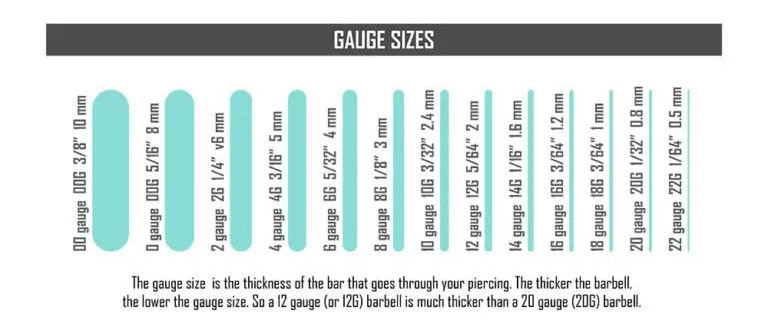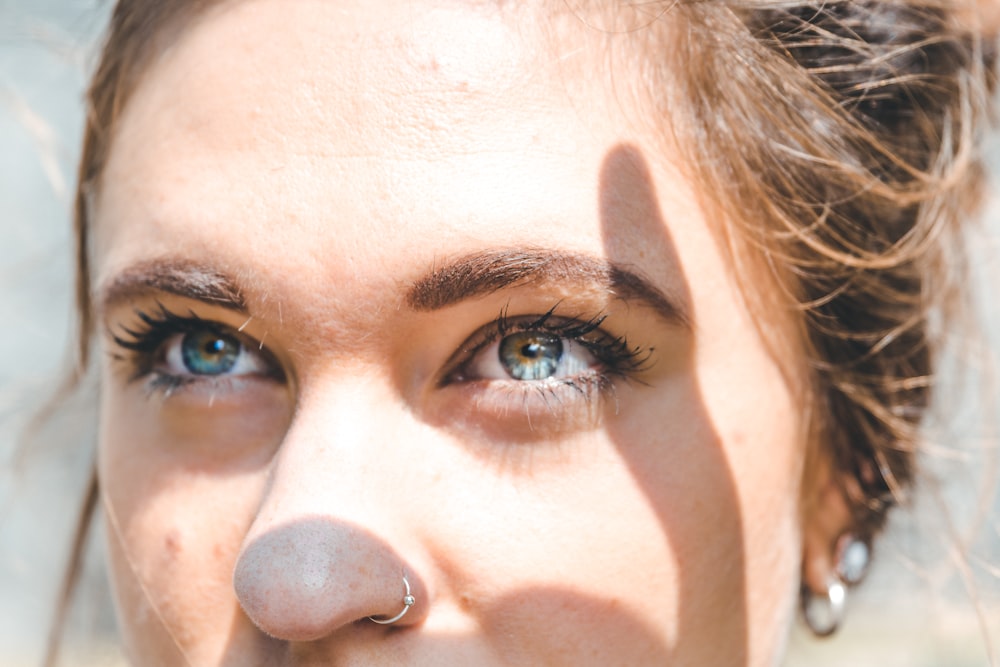
Piercing u nosu 101: Vrste, stilovi i naknadna njega
 Danas piercing u nosu može imati kulturološki značaj i izraziti vašu individualnost.
Danas piercing u nosu može imati kulturološki značaj i izraziti vašu individualnost.
Međutim, piercing u nosu seže tisućama godina unatrag, a prevladava u istočnjačkim kulturama.
Ako razmišljate o probušivanju nosa, tu smo da odgovorimo na sva vaša pitanja, uključujući:
Vrste mjesta za bušenje nosa i nakita
Što treba znati prije piercinga
Njega nakon piercinga
Zaronimo!

Vrste piercinga za nos
Prva odluka kada razmišljate o piercingu nosa je mjesto, evo vaših mogućnosti:
Piercing nosnice
Piercing nosnice je bezvremenski i odlično mjesto za vaš prvi piercing nosa. Ovaj klasični piercing prolazi kroz središte nosnice ili više na mostu (naziva se "visoki piercing nosnice").
Nakit varira od skromnih nitna do modernih minđuša za nos.
Možete čak dobiti dvostruki piercing na nosu, s jednim piercingom na bilo kojoj nosnici ili s dva naslagana na istoj nosnici, poput piercinga od zmijskog ugriza.
Vrste nakita : prstenje, nitne i drugo
Piercing septuma
Piercing septuma nosa, ili "bull ring", prolazi kroz "septalnu" hrskavicu koja odvaja vaše nosnice. Ovo mjesto ima potencijal za odvažan muški ili suptilni ženski nakit, plus pogodnost lakog skrivanja za rad ako je potrebno (osobito s kružnim utegom ili prstenom u obliku potkove).
Međutim, područje kože je kompliciranije. Važno je da vaš septum probuši ugledan, iskusan piercer kako biste spriječili infekcije, ožiljke ili septalni hematom.
Septum piercing treba probušiti za promjer 14, 16 ili niži promjer. Neki pierceri mogu se odlučiti za 18-gauge, ali više se ne preporučuju.
Vrste nakita : prsten u obliku potkove (kružni uteg), kliker, zakrivljeni uteg, prsten s perlama, bešavni prsten, polumjesec, držač septuma
Septril piercing
Ako već imate rastegnut i zacijelio piercing septuma, možda ste spremni za septril (ili "džungla") piercing. Ovaj složeni piercing prolazi kroz dno kolumele (hrskavica probušena za septum) i susreće se sa zacijeljenom rupom septuma, tako da piercing izlazi ravno iz sredine.
Vaša septalna hrskavica mora imati ispravnu strukturu i položaj da bi se ovim piercingom moglo upravljati. Za istezanje piercinga septuma potrebno je vrijeme prije nego što dobijete septril, ali rezultat je nevjerojatno loš.
Vrste nakita : mali zakrivljeni uteg, ravni stražnji klin
Piercing nosoroga (okomiti vrh)
Novost je piercing nosoroga ili piercing okomitog vrha nosa koji ide okomito kroz vrh nosa kroz područje iznad septuma. Duboki piercing nosoroga prolazi kroz dno septuma.
Rhino piercing, a posebno duboki rhino piercing, riskantniji je. Meko tkivo se buši i oštećenje može zahtijevati operaciju, a ožiljci su češći.
Vrste nakita : Zakrivljeni uteg; Ravni uteg (duboki nosorog)
Probijanje mosta
Bridge piercing je horizontalni piercing kroz meko tkivo mosta nosa između očiju. Ovo su površinski piercinzi, što znači da su ulazne i izlazne rupe na vrhu kože.
Površinski piercingi su riskantni jer ih tijelo češće odbija. Tijelo ga može odbaciti dok se liječi ili godinama kasnije.
Morat ćete izbjegavati plivanje, piće ili pušenje jer vaš piercing na mostu zacjeljuje tijekom 8 do 12 tjedana.
Vrste nakita : okrugli, zakrivljeni ili ravni uteg
Austin šipka (vodoravni vrh nosa)
Ovaj neuobičajeni piercing izvodi se vodoravno kroz vrh nosa bez bušenja nosnica ili septuma.
Jedinstven je, ali prilično bolan — ne preporučuje se za vaš prvi piercing.
Piercing sličnog izgleda, manje bolan je piercing bogomoljke (ili "nosnica okrenuta prema naprijed"), koji se sastoji od dva piercinga, od kojih jedan prolazi kroz prednji dio svake nosnice.
Vrste nakita : Ravni uteg
Nasallang piercing (tri nosa)
Ovo je slično Austin baru, ali je izloženo nosnim šupljinama. Prolazi kroz jednu nosnicu, hrskavicu septuma i drugu nosnicu. Rezultat izgleda kao dva klina na gornjim nosnicama.
Nasallang piercing zahtijeva mirnu, profesionalnu ruku, plus vještinu i simetriju kako bi se osiguralo da uteg bude ravno.
Također je skuplji, prilično bolan i potrebno mu je 6-12 mjeseci da zacijeli — ne preporučuje se za vaš prvi piercing.
Vrste nakita : Ravni uteg
 Autor slike: theSkimm
Autor slike: theSkimm
Vrste nakita za piercing u nosu
Odabir najbolje vrste nakita za vaš piercing nosa znači uzeti u obzir materijal, veličinu i oblik.
Materijali u nakitu za piercing u nosu
Nakit za piercing nosa treba biti kvalitetan kako bi spriječio iritaciju ili infekciju.
Najbolji metali za piercing nosa su:
Kirurški nehrđajući čelik (SSS):
Prednosti : Jeftin, prilično hipoalergen, izdržljiv
Nedostaci : Može sadržavati malo nikla
Najbolji stupanj : 316L ili 316LVM
Titanij :
Prednosti : Bez nikla, biokompatibilan, jak, ali lagan, otporan na koroziju
Protiv : skupo
Najbolji stupanj : stupanj 23 (G23) ili stupanj implantata
Niobij :
Prednosti : Hipoalergen, biokompatibilan, izdržljiv, cijenom između kirurškog nehrđajućeg čelika i titana
Protiv : Rjeđe, ograničene mogućnosti
Najbolji stupanj : Nelegirano (čisto)
Ostali materijali prikladni za nakit za piercing nosa su:
Platina
Aztec Gold (aka PVD)
Čvrsto zlato (14K ili više)
Biokompatibilni polimeri (npr. Tygon)
Metali koje treba izbjegavati za nakit za piercing nosa su:
Srebro (uključujući čisto srebro)
Akril
Mjed
bronca
Obloženi metali
Plastika (isključujući PTFE i Delrin)
Organski materijali poput drveta, kosti i rožine
 Kredit za sliku:Boelry
Kredit za sliku:Boelry
Veličine nakita za piercing u nosu
Nakit za nos mjeri se u debljini (mjernici) i dužini.
Debljina : u rasponu od 00G do 22G; Niži promjer = deblji; Piercing u nosu je 16G, 18G ili 20G
Duljina : prstenje obično 5/16” do 3/8” i klinovi obično 1/4” do 5/16”
Renomirani pierceri mogu savjetovati najbolju veličinu nakita. Očekujte dulji početni nakit za prilagođavanje otekline.
 Kredit za sliku: ThreadCurve
Kredit za sliku: ThreadCurve
Vrste klinova za bušenje nosa
Nitne su izvrsne za suptilan, elegantan izgled. Zavrnuti klin za nos tipičan je za početne piercinge, ali drugi stilovi piercinga za nos uključuju:
Twist Nose Stud : stupić u obliku slova U uvrnut
Ravna leđa : uklonjivi stup s ravnim leđima
Labret : ravni stup s ravnom poleđinom i završetkom s navojem (npr. lopta ili dragi kamen)
U obliku slova L : stup sa zakrivljenošću od 90 stupnjeva uvrnut prema unutra
Bone / Ball End : Ravni stup, ispupčenje na kraju
Ravni kraj / riblji rep : Dugačak, ravan nastavak, prilagođen pierceru
Igla : Ravna, pripijena kopča
Vadičep/kraj vijka : ravni zubac, zakrivljen kraj, uvrnut
Ravna šipka : Ravna šipka s perlama koje se mogu odvrnuti
Vrste prstenova za piercing u nosu
Prsten bez šavova : krajevi su uvrnuti za otvaranje i zatvaranje
Klikač/segmentni prsten : Zakrivljeni kraj se otvara za umetanje, klik za zatvaranje
Klikači pregrade : Mala šipka i šarke, kružni komad
Zarobljeni prsten od perle : Obruč zatvoren uklonjivom perlom
Kružni uteg/potkova : perle u obliku potkove s navojem, koje se mogu odvrnuti na krajevima
Obruč za nos s ravnim diskom : u obliku polumjeseca ili D, ravni disk na jednom kraju, uvrnut otvoren i zatvoren
Polumjesec/pincher : u obliku polumjeseca, ponekad pričvršćen O-prstenovima
Zakrivljeni uteg : blago zakrivljene perle koje se mogu odvrnuti
Lažni prsten za nos : Fleksibilni prsten stisnut i zatvoren
S kojom vrstom minđuše u nosu bih trebao početi? Većina piercera koristi uteg, zavrtanj za nos ili potkovu, ovisno o piercingu.
Je li bolje uzeti minđušu ili klin? Slijedite upute svog pirsera. Možete eksperimentirati nakon što zacijeli.

Što trebam znati prije nego što napravim piercing u nosu?
Odgovorimo na neka uobičajena pitanja poput:
Koliko košta piercing u nosu?
Piercing u nosu kreće se od 20 do 100 dolara bez dodatnih troškova nakita.
Piercing nosnice je najpovoljniji. Nasallang, most i septril piercing su najskuplji.
Koliko je piercing u nosu bolan?
Većina ljudi ocjenjuje bol na 3-4/10. Usporedno, bolniji su od bušenja ušiju.
Piercing u septumu može boljeti više u početku, ali brzo nestane, dok visoki piercing u nosnici može boljeti više tijekom oporavka nego u početku.
Koliko je potrebno da piercing na nosu zacijeli?
Svaki piercing je drugačiji:
Nozdrva : 4-6 mjeseci
Septum : 2-3 mjeseca
Septril : Oko 9 mjeseci
Nosorog : 6-9 mjeseci
Most : 8-10 tjedana
Austin Bar : 2-3 mjeseca
Nasallang : 4-6 mjeseci
Da li se piercinzi u nosu lako zaraze?
Neki su simptomi normalni nakon piercinga u nosu: svrbež, bijeli gnoj, malo krasta. Manje otekline, crvenilo, modrice i krvarenje također su česti. Iritacija i upala trebali bi nestati nakon tjedan dana.
Znakovi zaraženog piercinga:
Smrdljivi zeleni ili žuti gnoj
Pretjerana nježnost
Jako lupanje ili bol na mjestu piercinga
Infekcije možete spriječiti pravilnom naknadnom njegom.

Kako njegovati piercing u nosu
Novi piercingi zahtijevaju redovito održavanje kako bi zacijelili. Očistite ga 1-3 puta dnevno tijekom prvih 6 mjeseci.
Temeljito operite ruke.
Namočite papirnati ručnik ili vatu u fiziološku otopinu i držite ih na piercingu oko 5 minuta.
Uklonite krustu/iscjedak vatom umočenom u slanu otopinu.
Nježno osušite čistim papirnatim ručnikom.
Koristite samo fiziološku otopinu ili ono što vam je preporučio piercer. Vodikov peroksid, alkohol za trljanje i Neosporin su zabranjeni. Također izbjegavajte:
Dodirivanje piercinga prije pranja ruku
Branje korice
Uvijanje nosnog prstena
Nanošenje masti na piercing
Plivanje
Stavljanje kozmetike ili jakih sapuna na piercing
Spavanje izravno na piercingu

Odgovara li vam piercing u nosu?
Imate informaciju, sada je vrijeme da odaberete pravi piercing za nos. Hoćete li se odlučiti za mali piercing za nosnicu ili hrabri septum prsten? Najbolji izbor je ono što vama i vašem životnom stilu odgovara.
Pregledajte našu kolekciju prekrasnog nakita koji će upotpuniti vaš prsten u nosu!
Pretražite Fashion Encyclopedia
Povezane aukcije
povezani članci
Kako kupiti nakit na internetu. Postoji toliko mnogo vrsta perli. Na vama je da odlučite odakle želite započeti, sa svim autentičnim perlama od dragog kamenja ili ćete također koristiti staklene perle koje je napravio čovjek, kao i zlatne i srebrne perle. Vas
10th Apr 2019
Kako kupiti rubin za svoj prsten ili privjesak, Pobrinite se da naučite što više o rubinima prije kupnje prstena ili postavke u koju ćete dodati rubine. Poput dijamanata, rubini mogu biti manjkavi, a nesavršeni Rubin je jedan od najb
10th Apr 2019
Najnoviji članci
Titan je popularan metal za nakit poznat po tome što je lagan, izdržljiv i pristupačan. Saznajte sve o titanu, njegovoj usporedbi sa sličnim metalima te o prednostima i manama nakita od titana.
7th Feb 2023
Saznajte sve o nakitu od volframa - od njegove povijesti i upotrebe do njegove izdržljivosti i njege. Na kraju našeg vodiča znat ćete je li volfram pravi za vas!
7th Feb 2023
Razmišljate o dodavanju bezvremenskog nakita od bijelog zlata svojoj kolekciji finih dodataka? Ovdje je sve što trebate znati o sofisticiranom bijelom zlatu!
29th Jan 2023






![101.00 CTS TIFFANY PENDANT AND OPAL -FACTORY DIRECT [SJ4632]](https://liveplatforms-production.b-cdn.net/tenants/ja/uploads/images/60000-64999/61305/5ca59999419dc.jpg?width=480&aspect_ratio=1001%3A1000)

